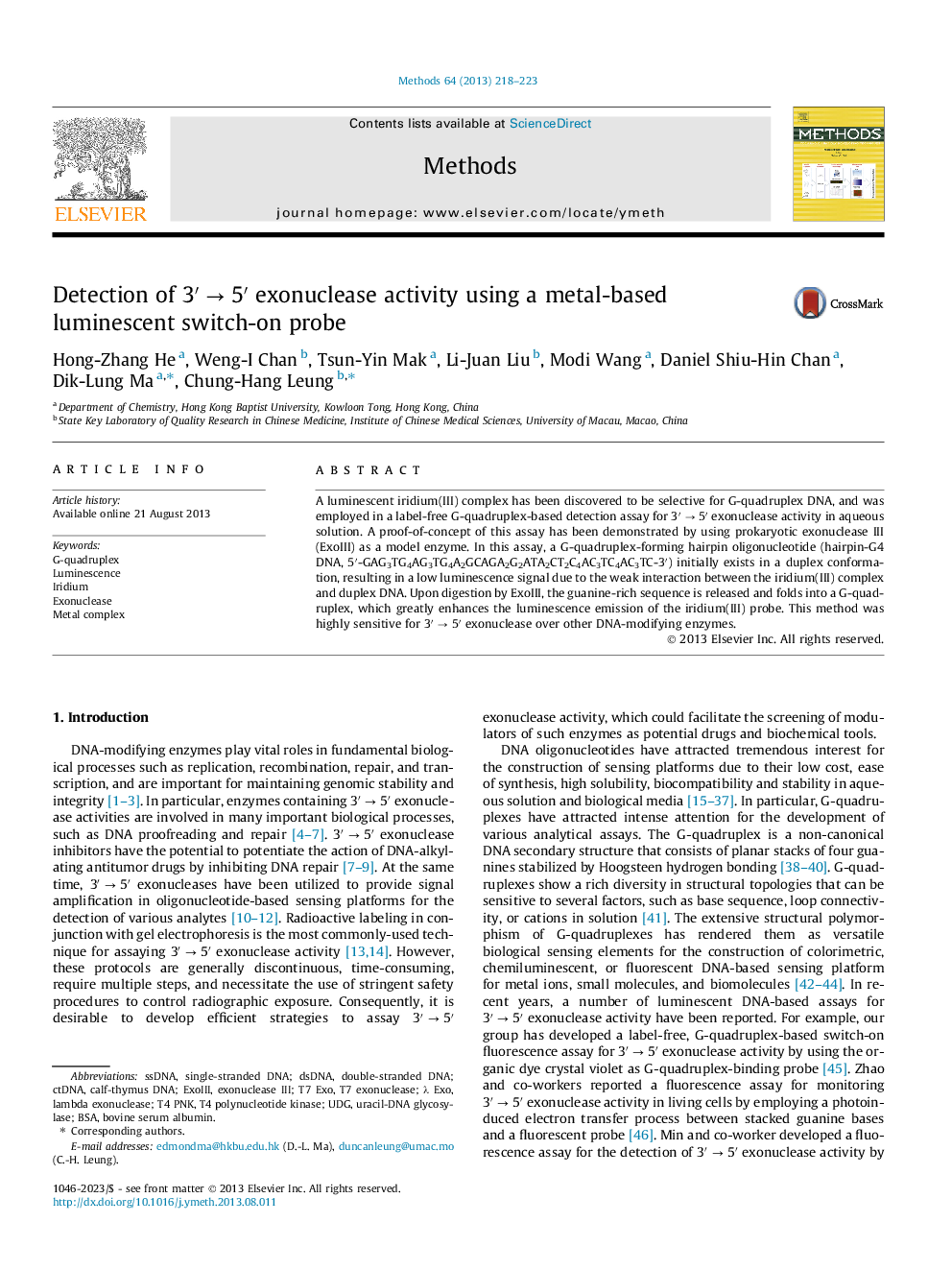| Article ID | Journal | Published Year | Pages | File Type |
|---|---|---|---|---|
| 10825846 | Methods | 2013 | 6 Pages |
Abstract
A luminescent iridium(III) complex has been discovered to be selective for G-quadruplex DNA, and was employed in a label-free G-quadruplex-based detection assay for 3â²Â â 5â² exonuclease activity in aqueous solution. A proof-of-concept of this assay has been demonstrated by using prokaryotic exonuclease III (ExoIII) as a model enzyme. In this assay, a G-quadruplex-forming hairpin oligonucleotide (hairpin-G4 DNA, 5â²-GAG3TG4AG3TG4A2GCAGA2G2ATA2CT2C4AC3TC4AC3TC-3â²) initially exists in a duplex conformation, resulting in a low luminescence signal due to the weak interaction between the iridium(III) complex and duplex DNA. Upon digestion by ExoIII, the guanine-rich sequence is released and folds into a G-quadruplex, which greatly enhances the luminescence emission of the iridium(III) probe. This method was highly sensitive for 3â²Â â 5â² exonuclease over other DNA-modifying enzymes.
Keywords
Related Topics
Life Sciences
Biochemistry, Genetics and Molecular Biology
Biochemistry
Authors
Hong-Zhang He, Weng-I Chan, Tsun-Yin Mak, Li-Juan Liu, Modi Wang, Daniel Shiu-Hin Chan, Dik-Lung Ma, Chung-Hang Leung,
